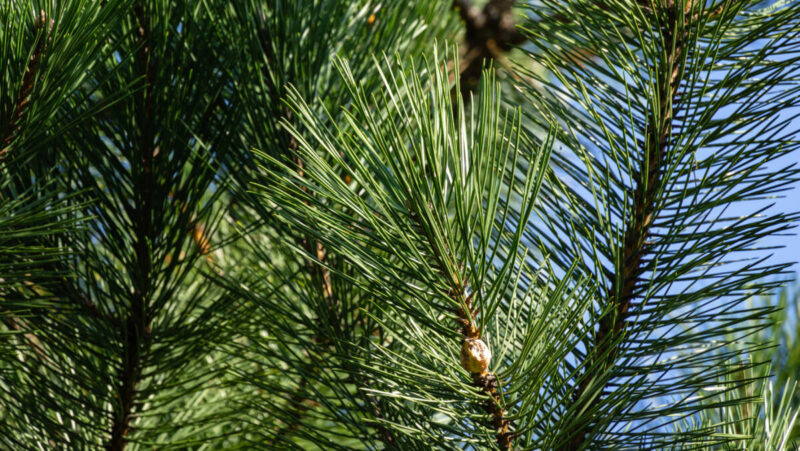To us, a Christmas tree is a decoration. But to many insects and small critters, it’s a habitat. And when you bring that habitat inside your home, you might be in for a surprise.
Andrea Coward and her family were certainly surprised in 2018 after cutting down a tree at a Christmas tree farm. Two weeks after bringing it home, a brown growth that resembled a small pinecone turned out to be a sac (called an ootheca) of a few hundred praying mantis eggs … and the insects all came spilling out.
Watch the TikTok video she posted this season at @andeekitty, which is set to a jaunty Christmas song:
@andeekitty Beware of the real trees. #realtree #christmastree #prayingmantis #prayingmantisoftiktok #christmastreefail #faketreenextyear ⬠It’s The Most Wonderful Time Of The Year – Andy Williams
MORE: Viral video shows why we should be hanging our Christmas tree lights vertically
Over 7 million people have viewed (and probably gaped) at the video, which also earned her a slot on “Good Morning America.”
“I just wanted to bring awareness to what could be in your tree,” Coward told “GMA.”
Researchers at the University of Illinois told The Kansas City Star that praying mantises are attracted to a variety of different trees and shrubs, including Frasier firs, to lay their eggs.
Praying mantis eggs usually hatch in the spring. But the warmer temperature inside your home can trigger the eggs to hatch early, according to Gavin Svenson, chief science officer at the Cleveland Museum of Natural History.
“The egg cases are tricked into believing that they had already gone through winter because [of] the warmer temperatures of the house,” Svenson told “GMA.” “They don’t hatch right away. They develop over the course of a few weeks, and then, surprise!”
Erie County, Ohio, posted this warning back in 2019 to show one of these egg sacs close up:
Praying mantises are carnivores and love to feast on moths, crickets and flies. For that reason, they are considered beneficial insects. Praying mantises may lay up to 200 eggs in a case called an ootheca in the fall. Oothecas look slightly different depending on the species, but when young praying mantises emerge, they look just like small versions of the adults.
They are also known for their sexual cannibalism: Females may eat males during the mating process in the fall, before they lay eggs and then die as well.
“If you do find a bunch of these mantises, don’t worry,” Svenson told “GMA.” “They’re not harmful. They’re little, delicate, fragile little creatures.”
MORE: Worker transporting the Rockefeller Center Christmas tree found a tiny owl inside
In fact, bringing them into our homes is much more of a threat to them.
“Once in your warm house, the baby praying mantis can hatch from its egg and will likely then starve,” University of Illinois researcher Chris Enroth told the Star.
So, if you do cut down your own tree, check the branches for this sac, which resembles a pine cone.
“If you find one,” Enroch said, “cut off the branch it’s attached to and place it in an evergreen outside.”

Some Christmas tree farms do try to remove these oothecas before they sell them — as Taylor Swift can attest.
The singer, who grew up on one of these farms, told Rolling Stone, “We all had jobs. Mine was picking the praying mantis pods off of the trees, collecting them so that the bugs wouldn’t hatch inside people’s houses.”
However, you’re still going to want to be careful. Praying mantises aren’t the only animal you might find hiding out in Christmas trees, commenters on Coward’s TikTok reveal.
“My last real tree launched thousands of spiders,” commented a user named @Leta_Melissa. “We threw it right out the front door and will NEVER get another real one again.”
Look for this growth on your Christmas tree before you bring it inside originally appeared on Simplemost.com, helping make the most out of life.
> > SIGN UP for the Simplemost weekly newsletter < <


